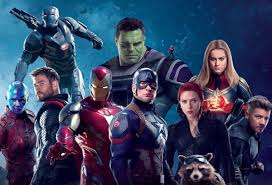DIRECTOR: Guy Ritchie LEAD CAST: Mena Massoud, Naomi Scott, Will Smith, Marwan Kenzari, Navid Negahban, Nasim Pedrad SCREENWRITERS: John August, Guy Ritchie PRODUCERS: Jonathan Eirich, Dan Lin EDITOR: James Herbert MUSICAL DIRECTOR: Alan Stewart CINEMATOGRAPHER: Alan Stewart GENRE: Fantasy, Animation DISTRIBUTOR: Press Play Pictures LOCATION: Jordan, England RUNNING TIME: 127 minutes.
Technical assessment: 3.5
Moral assessment: 3.5
CINEMA rating: V13 (Viewers
13 and below with parental guidance)
MTRCB rating: G
Aladdin (Mena Massoud) steals for a living in the
merchant city of Agrabah. One day, he finds Jasmine (Naomi
Scott), a princess disguised as a commoner, arguing with a
vendor after she gets the vendor’s farm
produce without paying and giving them away to two hungry
children. Aladdin helps her escape. Thus begins a love
story that sees Aladdin sneaking into the
palace to see Jasmine, where he gets kidnapped by the evil Jafar (Marwan Kenzari), advisor to Jasmine’s father
the Sultan (Navid Negahban). Jafar sends Aladdin—nimble and bold—to
find the magic lamp. Aladdin gets the lamp and hands it
to Jafar. Instead of rewarding Aladdin as
promised, Jafar throws Aladdin
to a ravine. The cunning Abu, Aladdin’s monkey, steals the
lamp and gives it back to Aladdin. Out
comes the Genie (Will Smith) who grants Aladdin’s wish to become a
prince so he could be with Jasmine. But there’s Jafar, who wants both the lamp and the
Sultan’s throne.
Big shoes to fill for Will Smith
who takes on the role originally played by Robin Williams in the
popular animated film in 1992. Smith plays the human parts of the Genie
here, but his hip Genie is CGI and his blue presence dominates the screen, even eclipsing Massoud’s Aladdin. We see the
familiar elements: the lamp, the jewels, the carpet, the
desert—but the CGI doesn’t show the
shining-shimmering-splendid whole new world. Lighting could have
sprinkled magic to the set, but as it is, many scenes are either dark or
bland. Naomi Scott is great, but her voice is reminiscent
of Hollywood pop instead of the solid timbre we’ve come to associate
with Princess Jasmine (missing Lea Salonga who sang A Whole New World in 1992). Instead
of giving us a variety of songs, the movie over-extends a few
musical performances. Compensating for these technical shortcomings,
however, is the heart and spunk in the support cast: Abu
the monkey, Baba the Sultan, the flying carpet, and Dalia
the maidservant, making Aladdin an entertaining experience on the
whole. Incidentally, Aladdin turns out to be a huge success
at the box office worldwide, grossing a total of $462 million against a
production budget of $183 million.
Hollywood brings us another woman
power movie in Aladdin.
Writer-director Guy Ritchie gives Jasmine a brand new solo titled
“Speechless”. “I won't be silenced / You can't
keep me quiet / Won't tremble when you try it / All I know
is I won't go speechless, speechless.” Here’s a young woman who has
the grit and fortitude to be sultan but does she have the gender for the role? See what her father ultimately does. Hers
is a story of a character unfolding to reach her full potentials—definitely
a good role model for young girls, especially her love and respect for her
father. Parental guidance alert on
Aladdin’s character: stealing is bad, there is no such thing
as a petty thief, or petty theft, and there is no adventure
in stealing. Still, we recognize that at the heart of the
film is the story of two men: the
evil Jafar and the orphan
Aladdin. Both are after the lamp. One wants it for power, the
other for love. Aladdin foregoes the riches and makes as his final
wish freedom for his friend the Genie. Now that’s compassion, earning
a just and satisfying ending.—MOE








